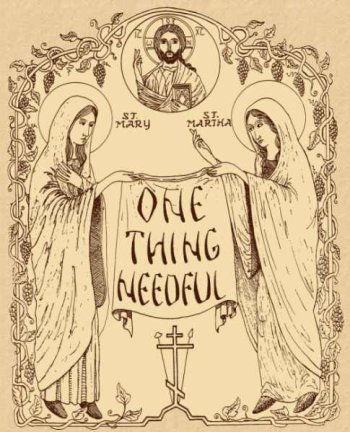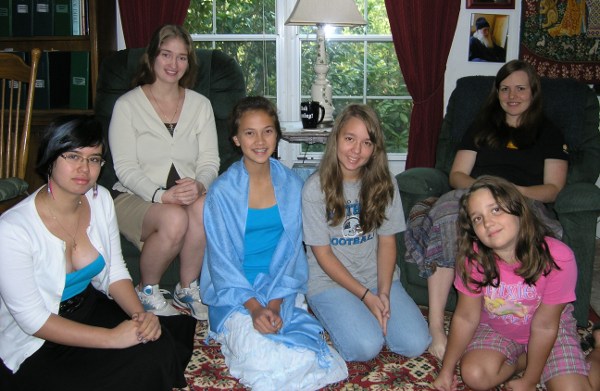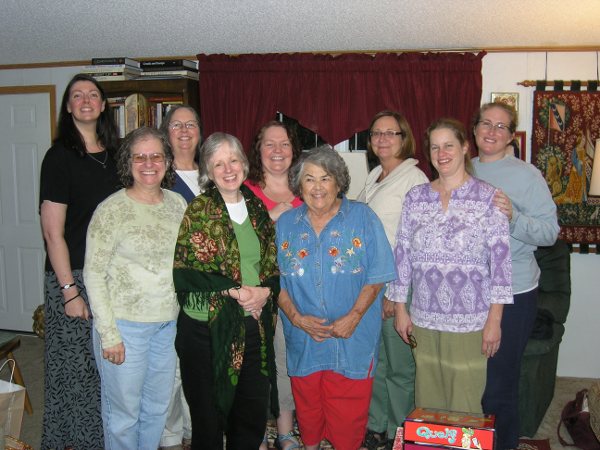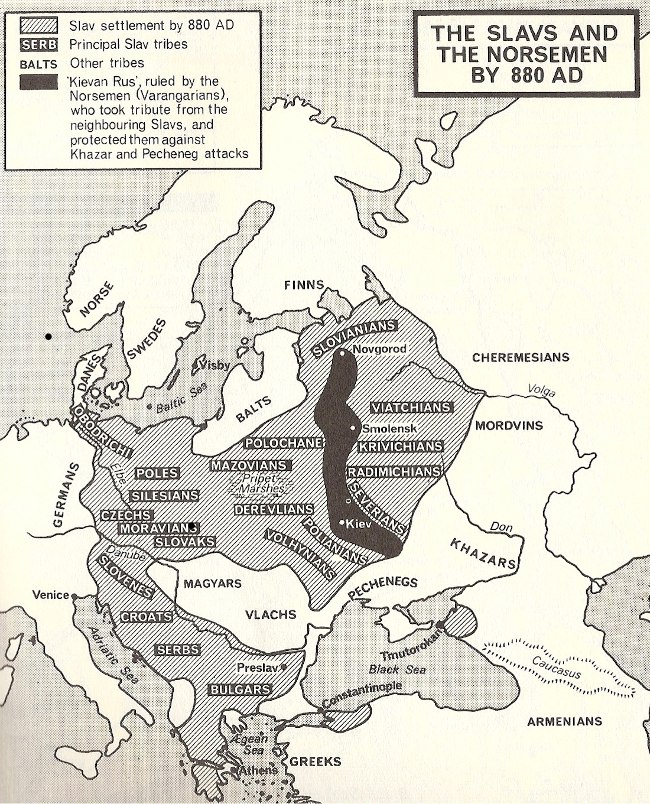








Orthodox Church in America
Diocese of the South
65 Spinner Lane
Wagener, SC 29164 - USA
telephone: 803-564-6894
email address:
Mary_MarthaM@pbtcomm.net


         Saints Mary & Martha
Orthodox Monastery
Orthodox Church in America Diocese of the South 65 Spinner Lane Wagener, SC 29164 - USA telephone: 803-564-6894 email address: Mary_MarthaM@pbtcomm.net |
  |
|
See old newsletters
ONE THING NEEDFUL
OCTOBER 2011 WHERE IS OUR ATTENTION?
In a homily of St. Gregory Palamas, we read “If your attention is occupied with what is holy, you make yourself worthy of being visited by God.” Where is our attention? Do we concentrate on the things that happen to us which we believe are hurtful and negative or are we able to thank God for all things and concentrate on the positive things in our life? Do we give our full attention to the moment in which we are – to whoever and whatever God has placed before us? We need to be attentive or we miss God’s presence and message in the moment. He is in our every moment. We are the distracted and/or distant one. The task at hand needs our attention but we can view it as an opportunity to work with our good God at accomplishing it well – asking His help, giving Him thanks (no matter the outcome). The person with whom we are dealing may be pleasant or not; yet, he/she is made in the image and likeness of God – we need to remember that and try to discover Christ in each person. God’s love for us is so great. He sent His only Son to show us how to live, to be in our midst, and to conquer death that we might live in His love and be able to spend our earthly life in His embrace and be given eternal life with Him. We are really not worthy of such love but God has chosen to love us anyway. May we gratefully acknowledge and accept His great gift.  MONASTERY NEWS
Over this last quarter, we took a serious look at what is happening to the economy, noted the amount we have in our Building Fund, and decided to ask our contractor what portion of the monastery building could be built with what we had. His response was two-thirds of the building, i.e., finished exterior with roughed-in interior. (Remember, this is a sizable building which has to conform to the National Building Regulations for a monastery -- Aiken County’s rules, not ours.) Of course, there is much in the way of infrastructure, like a well, septic system, grease trap, etc. We know it is expensive to build a truly energy efficient building which is as fire proof and earthquake resistant as possible. Investing up front for well thought out good workmanship more than pays for itself in the long run, as well as the short run. It is important to us to build well so that the next generation can add to it rather than have to rebuild. Too often, we have seen the sad results of the attitude, “Oh, just slap something up and leave the problem to the next generation.” Our contractor stated that is would be April 2012 before he could begin. Having looked at our calendar, April is already filled with Holy Week, Pascha, Bright Week, and our Pilgrimage. May or June will, more than likely, be the time we begin building, if all the paper work is done by then. Once the exterior of this portion of the building is finished, we will finish the interior of the Chapel and one working bathroom. Then, as God wills, we will finish off the other rooms striving not to go into debt. This said, we tried to contact our original architect to no avail. His office building was empty and up for sale. It has been twelve years since he drew the original plans. Over that time, we have made many changes as the result of our living monastic life here, and the suggestions of other professionals and friends who have shared their own experiences and ideas with us. Nothing has gone to waste. Now we have engaged the services of another architect and are working through the many changes and additions that have been made to the old plans. Of course, every time we hear the word “additions”, we hear the old time cash register go “chi-ching”. To have a Chapel that is separate from the double wide trailer we now live in would truly be a blessing for us as well as our visitors. Over the years, many of you have contributed to our Building Fund, which is currently, $395,449.33. As many of you know, our wish list has consisted of one thing -- donations to the Monastery Building Fund. While that is still the only item on our wish list, in time, it will become more specific as we work on the Monastery Building. Among our visitors in August, were four girls with their chaperons from The Exaltation of the Holy Cross Orthodox Mission, Greensboro, North Carolina. They were a delightful group of serious young women who participated in prayers, helped out in the candle shop and perennial garden, and enjoyed interacting with one another.  The Ducra family volunteered a Saturday in August and helped us with several task that required Barry’s strength. We finished setting the last three water hose holders on Candle Shop Lane, dug potatoes, picked up the cherry and maple wood at the sawmill, and set it up to dry.
September 10th found us at the Barnyard Flea Market for the first time this year. Showing up at the flea market one to three times a year for the last fifteen years has become more of an outreach to be a witness to Christ, the Orthodox Faith, and for people to know that there are Orthodox Christian Nuns. We sold all we could and added $275 to the Building Fund. That will pay for a few bricks. Each year we allow the ducks to have ducklings, raise them, and teach them “duck knowledge”. While they are maturing, we seek out homes for them. Once we know who is female and who is male, we notify everyone who is interested in raising Indian Runner ducks and solicit the help of children, usually members of the families who are receiving the ducks. Ducks went to four different families. It is important to thin out our flock to sixteen ducks (two drakes and fourteen hens) for their well being and our ability to care for them. Once again we enjoyed hosting the Clergy Wives’ Retreat on the fourth weekend of September. Nine clergy wives attended. Although the names and number of Matushki attending vary from year to year, this group was peaceful, productive, supportive of each other, reflective, and grateful to have a place to gather. 
It takes all three of us to bring the potted plants from outside into the front porch of the Barne Shoppes. When we saw that the nights were dropping into the thirties, we had to clean the windows and work quickly to prepare the porch to receive the plants into their winter home. October, like the other months was filled with prayer, visitors, and work, as well as a little “down time”. Even though we don’t go into detail, our lives are full and overflowing. Once you say yes to God’s will, He leads you on an incredible journey that you could have never imagined. 
 CHRISTIANITY IN KIEV BEFORE VLADIMIR THE GREAT Part 2 To read Part 1, go to http://www.saintsmaryandmarthaorthodoxmonastery.org/ and click on
Newsletters. Then click on See old newsletters, scroll down and click on Read January 2011
Newsletter.
It is thought that Christianity may have reached Slavic Kiev by the middle of the fifth century. Kiev had become a flourishing commercial center on the Dnieper River before its access to the Black Sea was intermittently cut off by the Kutrigar Huns, the Avars, the Alans, the Khazars, the Magyars and the Pechenegs in succession. This situation existed till the middle of the ninth century. Nevertheless, there was trade from these and other tribes to the east as well as the Slavs and Franks west of Kiev. Who fought against whom was often determined by the machinations of Byzantine politics. During this time, the Western Slavs migrated and settled in Greece as far as the Peloponnese which greatly alarmed the Byzantines. Whereas the Eastern Slavs slowly formed tribal unions.
It should be noted here that Patriarch Photius revived Byzantine missionary activities. Probably in late 860, he appointed Constantine the Philosopher (later tonsured Cyril) and Methodius as Christian representatives to the Khazarians, a kingdom east of Kiev. During their stop over at Chersonesos, Constantine found a copy of the Gospels and the Psalms written in Russian characters. After finding a man who spoke that language, he conversed with and quickly understood his Slavic dialect. Once he knew the sounds that each character represented, adjusted to the Slavic dialect of the area, and prayed to God, he was able to read, speak, and understand it (Russian). Before Rurik died or returned to Friesland (old family lands in Denmark) in 873, he left Oleg (Norwegian), a close relation, to rule Novgorod and to be the guardian of Igor, who may have been a son of his old age or his grandson. Oleg organized the northern Russian tribes, secured Smolensk, Liubech and other strategic posts on the Dnieper, led a successful military campaign against Kiev in which Askold and Dir were murdered by subterfuge, united the southern Russian tribes with the northern ones, and made Kiev his seat of power. With the Magyars and then the Pechenegs controlling the southern portion of the Dnieper River, it would not be possible for Oleg to launch his campaign against Constantinople till 907. Whatever Christian beginnings were in Kiev, this severing of communications to the south caused Christianity to diminish and the various pagan religions to increase.  Altas of Russian History, page 12 During this time, Constantine, now know as Cyril, died in Rome where he and his brother, Methodius, had traveled to petition the Pope to allow the Moravians to worship in their own language, a form of Slavonic. Permission was granted, but upon Methodius death in 885, the use of Slavonic was forbidden in Moravia due to the pressure Frankish bishops brought on Rome. The disciples of Cyril and Methodius packed up their translations of the Gospels and Liturgical Service books and took refuge in Bulgaria and Serbia and eventually in Russia. From 862 till 886, Khan Boris, wanting the Bulgarians to be autonomous both in church and state, struggled mightily with the pagan parties in his own country, with Rome who was influenced by the Frankish prelates, and with Constantinople who considered Bulgaria part of the Byzantine Empire and under its Patriarch. With the arrival of Clement, Nahum, and other disciples of Cyril and Methodius in 866, the use of Slavonic instead of Greek in Bulgarian churches was made possible. Slavonic copies of important church books were made. Seminaries to train Bulgarian priests were established. At the Bulgarian National Assembly in 893, Khan Simeon 893-927, the son of Khan Boris, was proclaimed ruler of Bulgaria, Slavonic was made the official language of the Bulgarian Orthodox Church, and Clement, a native Bulgarian, was appointed Bishop of Velich. By 900, there were a number of Slavs at the Bulgarian court as well as Bulgarians at the Kievan court. A simply written Cyrillic (Slav) script was now available to the Russians, which, in turn provided a vehicle for literacy and conversion to Christianity. (to be continued) Atlas of Russian History, Martin Gilbert, Dorset Press, New York, 1984 Byzantine Missions among the Slaves, Frances Dvornik, Rutgers University Press, New Brunswick, 1970 Entry of the Slaves into Christendom: An Introduction to the Medieval History of the Slaves, A. P. Vlasto, Cambridge University Press, Cambridge, 1970 History of Russia, George Vernadsky & Michael Karpovich, Yale University Press, New Haven, 1943 History of the Church of Russia, A. N. Mouravieff, Translated by Rev. R. W. Blackmore, 1841 Kievan Russia, George Vernadsky, Yale University Press, New Haven, 1973 Medieval Russia’s Epics, Chronicles, and Tales, Edited and Translated by Serge A. Zenkovskys, Meridian, New York, 1974 

|
  
December 10th at 9am
January 14th at 9am February 4th at 9am March 3rd at 9am Matins starts at 8am Knitters’ Retreat
February 10-11, 2012
Contact Maria Floyd: 803-642-4402 OR e-mail her at mariajfloyd@gmail.com This retreat is for women 21 years of age and older. Due to limited space, we can only accommodate twelve women. If you plan to attend, come for the entire retreat. You need to have a project or projects that you can work on without help from other knitters.  FROM MARTHA'S KITCHEN PUMPKIN DIP WITH GINGERSNAPS
14-ounce container of soft tofu, drained Except for the pumpkin and gingersnaps, place all of the above ingredients in a food processor or a blender and purée until smooth. Add one can of pumpkin and purée again. Pour into a medium-size bowl, add the rest of the pumpkin, and whisk until creamy. The lemon makes this recipe, so you may want to add more lemon juice, go ahead. NOTE: If you serve it at a gathering, you may want to put a note by it, stating what it is. We had people who thought it was Hummus and wondered why it was with the desserts. |